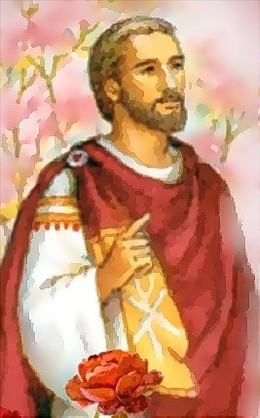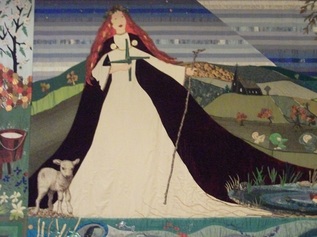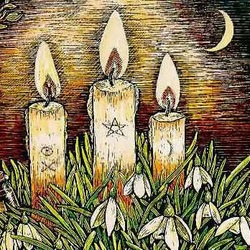
I’ll be working. It’s a second Sunday, which I’ve committed to the Florence Unitarian-Universalist Fellowship, here on the Oregon coast. I’ll speak at the Sunday service, helping to lead the singing, then, after the refreshments, I’ll sit in a “dialogue circle” with some of the folks to explore the ideas further. Lunch with a few congregants will be followed by an afternoon in the office, visiting and counseling with members. Then an hour or so of group meditation, and a quiet evening in the home of two women who help to maintain this wonderful congregation.
Not exactly romantic, but, truly, a day filled with love – the love between the people who attend, the love I feel toward them, the love they share with me, the love that flows through me as I open to my Higher Power for guidance in speaking, the love that built this congregation, and more…
Which is what I’ll be talking about during the service: how Valentine’s Day has kept love between mortals a part of the Christian tradition, and how that love can mature beyond the adoration of childhood and lust of adolescence to a wonderful range of emotions and actions and experiences that can lift us far beyond our norm.
For all the Abramic “people of the Book” – Judaism, Christianity, and Islam – love for God is fundamental, and loving one another is encouraged: as friendly, agape in Greek, or “brotherly,” philos in Greek. To love one another as siblings means to put up with foibles and weaknesses, to support each other’s growth and development, to reach out in caring ways, to trust fully, and to share without concern. And it’s what schoolchildren are encouraged to feel when sharing Valentine cards, cookies, and candies.
All that’s good. But that kind of love is not what holds a marriage together, or drives someone to overcome tremendous obstacles to save another person or create a new lifesaving process.
No, that kind of love requires passion, which, in Greek, is eros. Romantic or sexual passion is fundamental to a good marriage, and is what Valentine’s Day symbolizes in our culture – unlike any other day in the Christian calendar.
Not that it’s really important in that calendar – the lack of data about the original saint has led the Roman church to downplay the date considerably. But they’ve left it for those who wish to honor it – which I believe is a good thing.
(to see a video of Ruth's talk, CLICK HERE)

Valentinus was a common name during the Roman Empire, meaning courageous, valorous. And it seems that 3 Christian leaders bore that name at about the same time: 250-280c.e. Of these, 2 are reported to have been from the nearby city of Terni and to have been beheaded in Rome during the reign of Emperor Claudius II. These are probably actually the same person with slightly different reports.
What Valentinus did to deserve beheading is not clear, but the strongest tradition is that the emperor needed huge amounts of soldiers to restore the badly damaged borders of the empire and so made it unlawful for young men to marry until they’d served their duty. Bishop Valentinus, not wanting people to sin by coming together without marriage, went ahead and married his Christian followers in secret.
One version of the story says that he was put under house arrest in the home of a judge while awaiting the imperial decision, and that the 2 debated the power of Christ until the host challenged Valentinus to use that power to heal a young girl who was blind. She was healed and the man and all his household became Christians as a result.
The stories go on to suggest that Emperor Claudius II had a few conversations with the bishop, too, which went agreeably at first, but at some point he drove Valentinus out to be stoned to death. My sense, based on the limited knowledge we have of Claudius’ background, is that Valentinus’ Christ came far too dangerously close to the soldier’s god Mithras, a far more ancient “son of God”, and that even though Claudius himself may have been intrigued, he could not, as the head of the Roman army, allow this heretical teaching to continue – nor could he let Valentinus continue marrying Christian men.
The stoning, we’re told, wasn’t enough to kill Valentinus, so they beheaded him and buried his head outside the gates in a spot which the Christians marked, so that some time later it was dug up and carried back to his home town. The traditional date for his martyrdom is Feb 14, 269c.e.

Well, remember that little girl who had been healed of blindness? The story goes that when Valentinus was taken away from her home to see the emperor he left her a note telling her of God’s love for her and his own, and signed it “your Valentine.”
My favorite explanation is one my grandmother used to tell. She said that while he was under arrest Valentinus’ followers would gather outside the house, hoping to see him. He wasn’t allowed to preach, or even to send them letters, but there was a vine with large, heart-shaped leaves, a philodendron (and she’d point to one that we always had while I was growing up), growing outside his window and each morning he would write a few words of loving encouragement on a leaf and send it floating down to his people. They kept them long after he was gone as reminders of his love for them.
It was another 200 years before Valentinus was made a saint, and his feast day was set as Feb 14.
Now that date is interesting in itself. The next day is Rome’s “4th of July”, when the children of the city’s founders (and later, anyone who was willing) would gather at the cave where Romulus and Remus, the founding twins, were adopted by a she-wolf, go through an initiation involving sacrificing a goat and a dog, then run through the town naked with strips of bloody goatskin, swinging it at every woman in sight. On the 14th they cleaned out houses and temples, and took ritual baths, on the 15th they ran, and on the 16th they would bed and often wed one of the women they had “lashed.” Called Lupercalia (lupus means wolf) it’s the day when, according to Shakespeare, Antony offered Julius a crown as king of Rome and Julius, already calling himself Caesar, said “no,” and so died a month later.
Chaucer connects the 2 in his Parliament of Fools, commenting that mid-February is when the birds choose their mates and so it made sense that people would do so as well.
As a result many people think that “national hearts and flowers day” is a remnant of that ancient rite of purification and mating.
So that explains the hearts and the couples. What about the cards?
Well, those were a French invention, over a thousand years later, in 1415, when Charles, Duke of Orleans, was in the Tower of London and wrote a loving Valentine’s Day poem to his wife. It’s on display in the British Museum.
It was a marvel that caught attention, and by the late 1700s sharing love poems with hearts, spring flowers, and references to Eros’ arrows of love was very much a part of life in upper class England. Then, in the late 1800s, a British printer began to mass produce these poems as cards…and you know the rest of the story.

Oh, chocolate! Yes, well, when it arrived in Europe in the 1500s it was obviously an aphrodisiac – so of course it had to be shared on this day of all days!
But regardless of the trappings of the day the core message is still the same: we are loved by our Creator and that love is part of us, waiting to be expressed. We express it in many ways, as children and as parents, siblings, and friends – and if we are truly fulfilling our capacity as humans, as committed lovers ever deepening our affection, appreciation, honor, caring, joy, delight, understanding, empathy, and all the other qualities of a true and mature love with our beloved.
Happy Valentine’s Day!




 RSS Feed
RSS Feed
